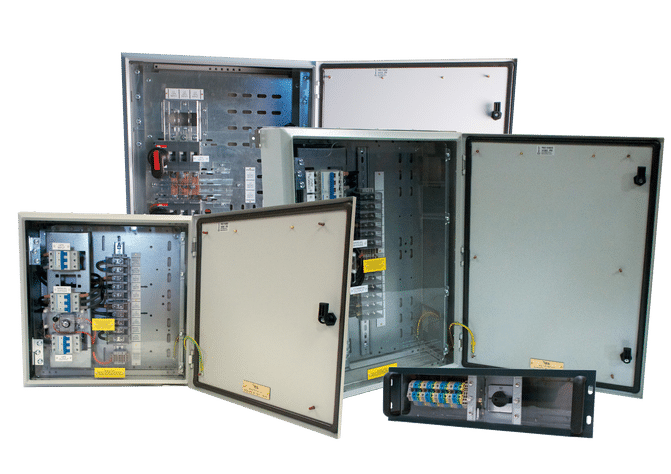What Is A Bypass Switch?
A bypass switch is a device used to connect or disconnect a circuit from the main power source. It allows you to easily switch between two circuits or components without having to unplug or physically disconnect them. A bypass switch is shortened to the name EMBS or also known as an automatic transfer switch (ATS). The bypass switch is installed externally, some UPS units come with a bypass feature integrated with the unit. However, these units still benefit from an external maintenance bypass switch installed. This is because the UPS units with the bypass function only allow power to go straight to the UPS whereas the EMBS cuts the UPS out of the circuit.
Alternative to Bypass Panels
If you do not have a bypass switch installed, this will mean when your UPS unit requires removal, repair or maintenance, your business may be required to power down. In some circumstances, this downtime may last up to several hours.
Our Bypass Panel Guide
Here’s a guide on bypass switches and how you can use them in a backup power strategy:
- Understand the basics of bypass switches: A bypass switch is typically used in situations where you need to quickly switch between two circuits or components, such as a backup generator and the main power supply. When the bypass switch is in the “ON” position, the circuit is connected to the main power source. When the switch is in the “OFF” position, the circuit is disconnected from the power source and connected to the backup generator.
- Determine the type of bypass switch you need: There are several types of bypass switches available, including manual and automatic switches. Manual switches require you to physically turn the switch on or off, while automatic switches are designed to switch automatically when a fault is detected in the primary power source. Choose the type of switch that best suits your needs and budget. If you are unsure which bypass panel you require, contact us so we can advise you and provide quotes.
- Install the bypass switch: Installing an external maintenance bypass switch will require one of our expert engineers and it should not be attempted as a DIY project due to safety and regulatory reasons. We will need to turn off the power to the circuit before installing the switch.
- Use the bypass switch: To use the bypass switch, simply turn the switch to the “ON” position to connect the circuit to the main power source. To disconnect the circuit from the main power source, turn the switch to the “OFF” position. If you’re using an automatic bypass switch, the switch will automatically switch to the backup power source when a fault is detected in the primary power source. In some situations, this should only be used by an engineer during maintenance and repairs on your power protection systems.
- Maintain the bypass switch: Regular maintenance is important to ensure that the bypass switch continues to work properly. Check the switch periodically for any signs of damage or wear, and replace any damaged or worn parts as needed. It’s also a good idea to test the switch periodically to make sure it’s working properly.

Two Types of Bypass Switches
- Static Bypass: This bypass works by dropping a load automatically onto the mains input feed for continuous power, if the inverter fails.
- EMBS: The external maintenance bypass switch is installed to the outside of UPS units. This bypass is used to continue the flow of power while the UPS is in isolation (Maintenance/repair or removal of the UPS)
If you are considering implementing a bypass switch, contact us today.
